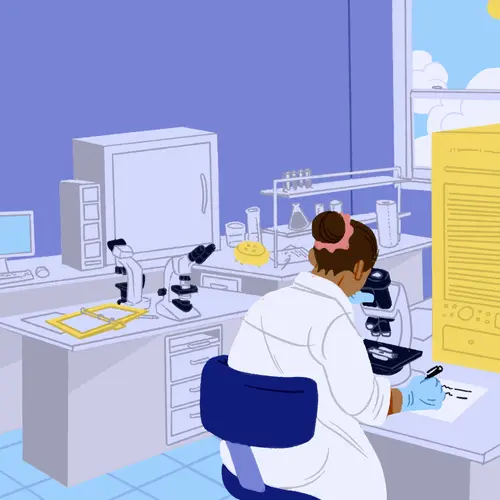What Is Masking ADHD?
Have you ever hidden a trait that made you seem different? We’ve probably all done it at least once to try to fit in.
If you hide your adult ADHD symptoms from other people, that’s called masking. Basically, you’re trying to seem more “normal” or “regular.”
ADHD causes some people to act hyperactive or impulsive. It makes other folks have trouble paying attention. And still other adults have a combination of those symptoms.
You might try to mask your symptoms at home, work, or socially. There are some possible upsides to it, and some serious downsides, experts say.
What Are the Pros of Masking?
Masking might lead you to come up with your own toolbox of strategies for living with adult ADHD, says Abigail Levrini, PhD, a licensed clinical psychologist in Ponte Vedra Beach, FL, and author of Succeeding With Adult ADHD: Daily Strategies to Help You Achieve Your Goals and Manage Your Life.
Levrini says some positive examples of masking are:
- You write everything down to help yourself remember it later if you have trouble paying attention.
- You make the effort to talk less, listen more, and repeat back in your head what the other person said because you talk a lot and tend to interrupt conversations.
- You start researching organization tips and put them into action because you struggle to keep your home or office space organized.
But masking can be both helpful and hurtful, she says. It depends on what you’re doing.
What Are the Cons of Masking?
Masking is about prioritizing your social image -- what people see -- at an expense you pay in other ways, says Ari Tuckman, PsyD, a psychologist in West Chester, PA, and the co-chair of the National Conference Committee for the nonprofit organization CHADD (Children and Adults with Attention-Deficit/Hyperactivity Disorder).
Tuckman says a couple of ways that some people pay for masking are:
- You have trouble completing tasks as quickly as your co-workers. So you stay late or put in extra hours at home to finish your work. But those might be unpaid hours. It’s also time you’re not spending with your family, exercising, or relaxing.
- You struggle to stay organized and keep your home looking good. So you never have friends over. Your friends may start resenting you for not inviting them over. Or, if you do invite people to your home, you stay up till 3 a.m. the night before to finish cleaning, just to make your place look presentable.
Over the long run, these types of masking can take a toll on your:
- Sleep
- Healthy eating habits
- Exercise
- Relaxation time
Tuckman says you might feel burned out and start to ignore other things, like getting your taxes done on time, going to your doctor appointments, or keeping your home clean.
Other mental health conditions that are common with ADHD might also enter the picture. Tuckman says masking can lead to anxiety or depression if you feel like you’re constantly under too much stress. Levrini says if you often try to mask strong emotional reactions and tell yourself that you’re not capable or normal, that can also drive depression and anxiety.
What Can You Do About Masking?
If masking starts to take a toll on you, see a mental health professional who can help you handle your ADHD.
Choose someone who’s very knowledgeable about the disorder, Levrini says. You could ask them how much experience they have treating adults with ADHD. You could also ask them how they treat ADHD differently than they treat another mental health condition, like depression, she says.
Educate yourself, too. Learn how to manage your adult ADHD in other ways, so you don’t have to rely on masking as much, Tuckman says.
CHADD offers these tips on how to gradually mask less:
Be mindful of when you’re masking. It may feel so “normal” that you hardly recognize you’re doing it.
But try to make yourself aware of it, and think about why you’re doing it. Does it shield you from emotional hurt or shame? Give you a sense of security at work? Help you live in denial that you have ADHD?
Take control. Maybe you’ve been masking on autopilot. If so, start making conscious decisions about which situations you’ll put your mask on.
You could decide to mask in some situations and not do so in others. Make the choice based on how comfortable you feel.
Give other people time to get used to the “real” you. If you completely drop your mask in every situation all at once, some people might be surprised by how you act. You might face some rejections.
Decide who you’ll take your mask off for and how gradually you’ll do so. You could also decide whether you want to explain your ADHD symptoms to them, with or without mentioning the disorder by its name.
Feel the love. Spend time with friends, family, and other people who accept you for who you are.
Is It Possible to Start Masking Before You Get Diagnosed With ADHD?
Yes, says Levrini. Before some people get diagnosed, they recognize that they’re different and mask those traits that make them different to fit in.
Some people also mask unintentionally before they’re diagnosed, she says. They’re not aware that they’re different, but they may just copy other people’s behavior. In that case, you’re imitating what you think people should be like, but you don’t realize that there’s anything different about yourself.
Learn more about how adult ADHD is diagnosed so you can get the help you deserve if you have the disorder.

